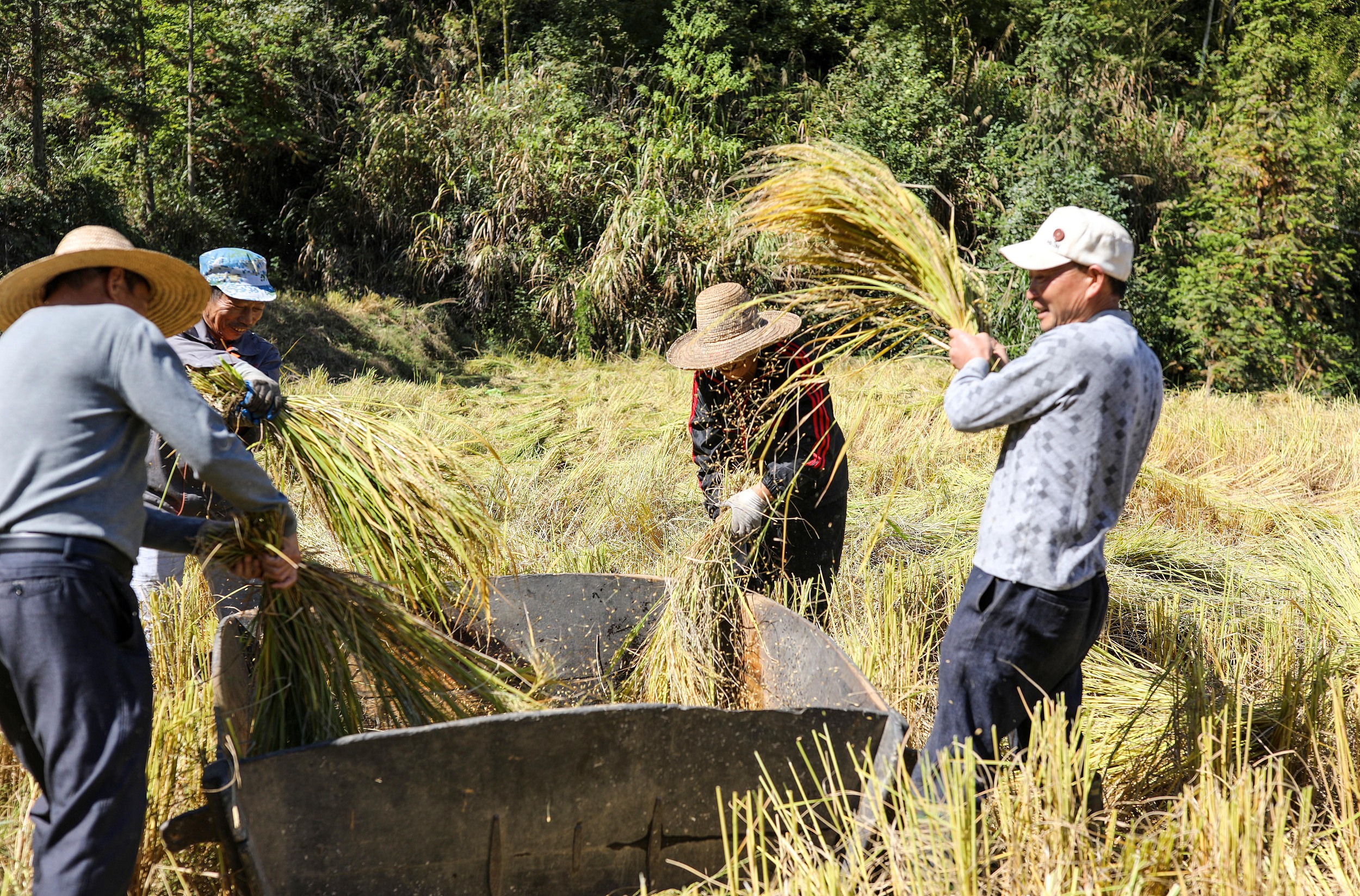The Origin and Development of Rice Cultivation
By BI Weizi

Villagers in Peimei town, Wannian county, Jiangxi province, harvest rice in October, 2022. (PHOTO: VCG)
China is the first country in the world to have written records of rice varieties. Guanzi ·Diyuan, the earliest book on land classification, written in the Warring States (476 -221 BC), keeps an account of ten rice varieties and the suitable soil conditions for their cultivation. During the Song Dynasty (960-1279), Zeng Anzhi wrote the first Chinese monograph on rice varieties in five volumes, which is an important ancient work on agricultural science and technology. Rice varieties, their fertility and cultivation characteristics, along with a large number of local varieties are also recorded in local chronicles.
In ancient times, rice was mainly cultivated by using fire for farming and water for weeding. In the Eastern Han Dynasty (25 -220), rice technology was developed, and more advanced techniques for plowing, transplanting and harvesting were introduced in southern China. After the Tang Dynasty (618-907), curved plow in the southern rice fields improved labor efficiency and field quality substantially, and under the influence of dryland plowing and harrowing techniques prevalent in northern China, a set of land preparation techniques applicable to paddy fields was gradually formed.
In the Southern Song Dynasty (1127 -1279), specific standards and methods for preparing early rice fields, late rice fields, low-wet cold fields in mountainous areas and plain rice fields were proposed, and the land preparation technology was further perfected. The "2016 Science and Technology Forum - Colloquium on the Origin of Chinese Rice Cultivation" hosted by the Chinese Association for Science and Technology suggested that Wannian County, the mountainous terrain of east China's Jiangxi province, is the birthplace of rice cultivation, the roots of which have been traced back to around 10,000 years.
As one of the most important grain crops, rice supports more than 50 percent of the global population. Being the birthplace of rice cultivation, China has always contributed its agricultural wisdom to further increase rice production and improve people's livelihood.






